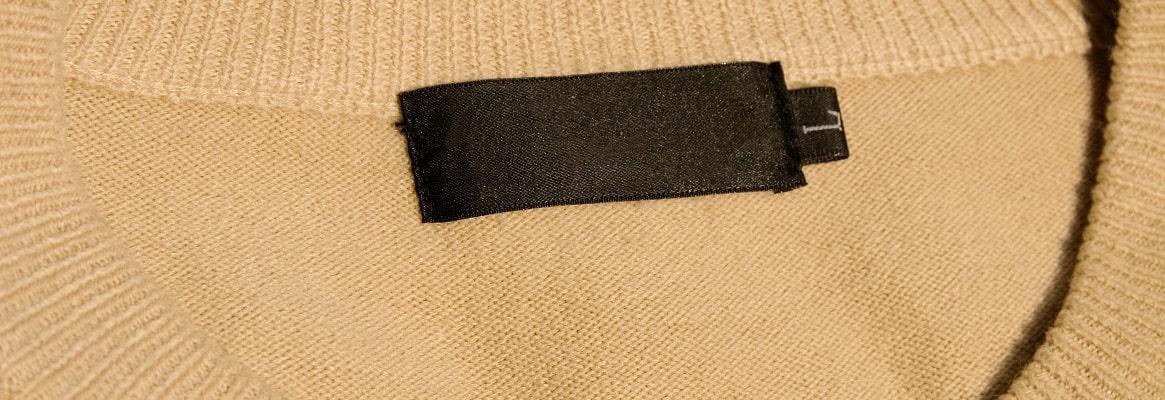Clothing labels are the most important part of any garment because they provide instructions to the customer on how to take care of their clothing best. The type and placement of a label can impact whether your customers keep buying from you. In this article, we will explore some benefits of using care labels and tips for designing them so that they make your clothes more attractive to consumers.
Share details about the material
The description of the materials that a piece of clothing was made from is one of the most important pieces for any label.
Consumers today are more aware of the environmental issues and want to know where their clothes come from. With so many types of plastic (nylon, polyester) materials that can make up a garment, consumers now have an ethical dilemma about which clothing to purchase.
Polyester, rayon, and nylon can be problematic for the environment. These materials are made from non-renewable, difficult to recycle natural resources, and require a lot of energy to manufacture.
Shoppers have driven the demand for cheap clothing, but it comes at a price. Most of these clothes will end up in landfills within 12 months and are made from materials that eventually become waste before they reach the rack.
The amount of detail found on a clothing label determines whether or not someone will purchase it.
Clothing labels show how to take care
Proper laundry and dry-cleaning care are important for any garment. Without them, some clothes might rip or run if the warning on the label isn't followed. Cotton is one fabric that can be washed in the machine, but not all other fabrics.
Wearing the material labels can help to take care of your clothes before they become damaged. When clothes look new for a longer period of time, it is not a hard to wear them for more than a couple of years.
Care labels for clothing are a way to keep your garments looking new for longer periods. The wear and tear of everyday life can take a toll on any fabric, but clothing with proper care instructions will last much longer than those without them.
Different fabrics require different cleaning methods, which may include machine-washing or dry-cleaning depending on what's listed on the label. Everyone should know how to read their garment labels before wearing or washing them to be properly cared for and not become damaged in the wash cycle. When this information isn't present, always tread cautiously and consult an expert.
Branding
Clothing labels are required by law to provide basic information about the garment, but labels can also be a way for designers to promote their brands. Your clothing label is more than just a place to put technical information about the garment. It's an opportunity for your business to express its brand identity through marketing and promoting your various lines of product. Brands can help make the success of a company. Not only do they build customer trust, but they also give some distinction between products and labels that can show how to take care of clothing items. Clothing labels can be used to create personal and recognisable ethos for the company. Clothing labels can be used to provide a message about your company's sustainability policy or describe the eco-friendly manufacturing process used in the garment. Clothing labels for some brands are used to make statements about themselves, whether funny jokes or holiday wishes.
Types of labels
Brand Label: One of the most prominent clothing care labels on a garment is its logo. Brand labels play an important role to customers because they're the only information consumers have about clothing—a brand associated with the product quality and feel.
Size label: Size labels are a specific set of measurements of the human body. They designate an individual's height, weight, chest size, and approximate length (length) foot. Labels may be printed only on the garment's side to denote a specific size. One of the most commonly seen garment-care labels is a size tag. The customer knows their size. A shopper will pick an item based on their size, which matches well with them.
Care label: Expensive clothing items often require special care instructions. You may find this specific label on the side of your garment in a small neckline pocket. Refer to "garment care symbols" for details. Care labels are often found on the inside of clothing besides the side seam. Your clothing care label acts as a warning to differentiate what wearers should do during washing, drying, and ironing their clothes. A care label may include few other information such as:
Cotton and polyester are two of the most commonly listed materials in dress shirts. If you happen to see one or the other in a care label, it is likely to be 40 per cent cotton/60 per cent polyester or 60 per cent cotton/40 per cent polyester.
The country that manufactured the product is also written on clothing labels.
Manufacturer Label: Clothing manufacturers provide this label to let customers know about the specific manufacturer of the clothing. Primarily buyers from foreign countries purchase garments and then distribute them elsewhere in the world. To determine the manufacturer of a particular product, shoppers typically use this code.
Conclusion
The importance of clothing care labels is obvious to most people. However, not everyone knows why they're so important. This blog post has given you the information you need to be a more informed consumer and help preserve your clothes for years to come! Now that you know what goes into making these little tags on everything, we hope this will make it easier for you at the store or when purchasing online from an affordable designer.










Comments